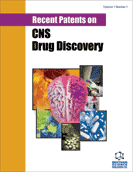Abstract
Several recent studies from the authors laboratory have shown that tamoxifen, at higher concentrations than used for breast cancer and given i.v., can substantially prevent tissue infarct and behavioral deficits in reversible and permanent rat focal stroke models for up to at least 14 days after initiation of ischemia. Longer times and purely i.p. or oral administration have not yet been tried. Its marked effectiveness may be because it has several neuroprotective modes of action including free radical scavenging and, being highly lipid soluble, readily crosses the blood-brain barrier. Plus, it has a three hour therapeutic window. Thus it meets many of the STAIR criteria and should be a promising candidate for clinical use. However, a number of its positive effects were exhibited by the free radical trapping agent NXY-058, which also functions as a free radical scavenger. In two recently completed clinical trials (SAINT 1 and 2) NXY-058 had marginal positive effects and did not meet treatment criteria, respectively. Differences that may make tamoxifen still desirable and the problem of predicting clinical efficacy from successful animal studies are discussed.
Keywords: Tamoxifen, neuroprotectant, experimental stroke, human stroke therapy
 6
6





















